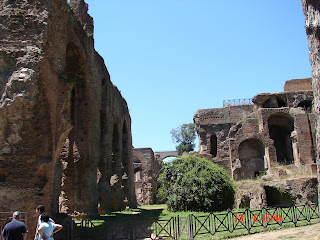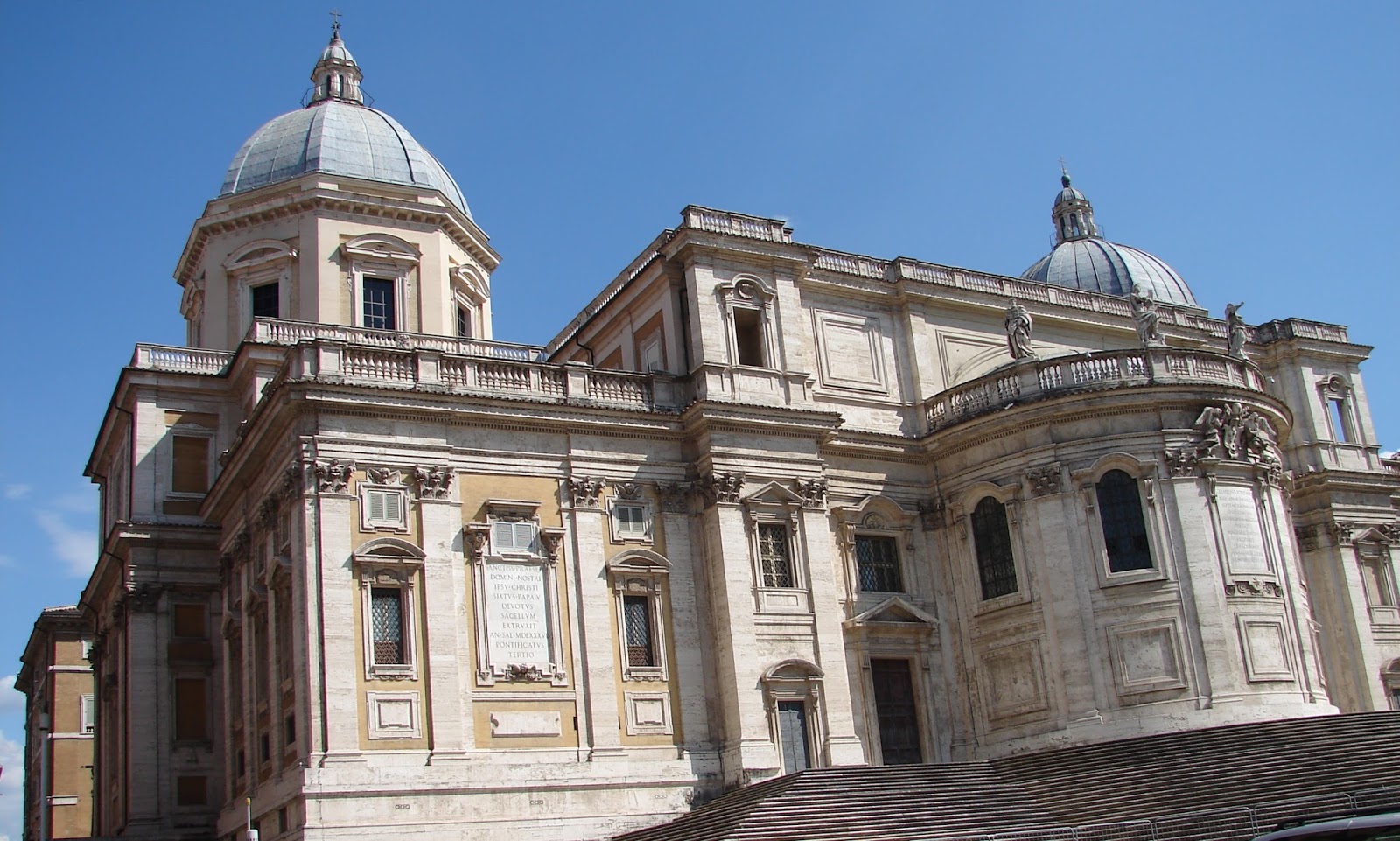I believe we were dealing with temperatures in Rome similar to the ones we left in Texas. The only difference was Roman temps were in Celsius compared to our Fahrenheit, which made the Celsius seem cooler. So, 32*C does not sound too hot before it is converted. As a rule of thumb, David tells me, 28* C is about 82* F. We were not really thinking about temperature conversion and heat index, we were just plain hot and walking under a bright, bright sun. Nevertheless, we were drinking in every possible moment along with plenty of water.
Following the crowds from the Colosseum, we wandered across the street to Palatine Hill. This was a less crowded area with some shady spots along the way. This place, according to Roman mythology, was where a she-wolf found Romulus and Remus and kept them alive. Palatine Hill stands at the center of the "seven hills of Rome" and is thought to have been inhabited as early as 10th century BC. There is archaeological evidence of a Bronze Age settlement. Palatine Hill became a fashionable place to live and, at one time, was covered with imperial palaces.

On Palatine Hill, amid the sheltering trees and centuries -old ruins, we had a lunch scavenged from our backpacks - cherries and bananas bought at a street market near the hotel and a packs of crackers/ snacks left from the airplane.

Somehow, Palatine Hill is impressive. Maybe it has something to do with the view or the lack of crowds, but it holds its head high and says"accept me for what I am, and was."



We were met at the top of a lengthy set of stairs by a man offering bottles of water - 2 bottles for 1 Euro.
We had depleted our water supply and were miserably thirsty, but I had not seen water that cheap anywhere else in Rome. Red Flags went off in my head - too cheap means trouble so, as thirsty as we were, I declined his offer. He had met us just before we hit the top step so he must have been a pro, knowing how thirsty the tourists would be. We had not gone 100 steps further when we discovered a water source in a nearby grotto. People were happily drinking and filling their bottles, so we joined them. The water was good and quite cold. We drank our fill and refilled our water bottles. I can only imagine that the man offering to sell us water had refilled some empty bottles of unknown and questionable source.

We continued traversing the extensive grounds, trying to visualize the life of affluent occupants from ages past. The "Hippodrome" was once a garden area with columns, statues, landscaping, and fountains. Currently, several displays of various art forms give a modern touch to the ancient ruins.

 |
????
|
Continuing on the upper level of the Hill, we discover remnants of "palaces" built by the affluent citizens of Rome. Here the air was cleaner, they could dodge the diseases of the common people, and they had beautiful views of the countryside.
The area consists mostly of ruins and excavated parts of buildings from which archaeologists continue to piece together the history surrounding the people of the area.
The Palatine Museum houses artifacts, excavated from the area, dating as far back as the Middle Paleolithic Period, and works of art.
 |
| A fresco |
There is much of interest here and it deserves more time, but the brain can only absorb so much at one time and the body can only endure so much heat. We reluctantly leave to find our way to the Roman Forum.



















































 "
"












